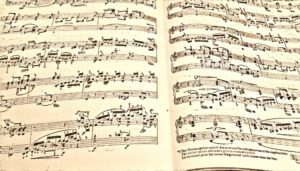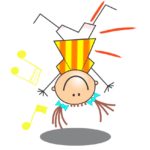Scary But Not Dangerous
 One of my adult students has chosen to work on Haunted Spot from Schumann’s Forest Scenes. “I just don’t know how to go about this,” she said when she brought it in. “I can’t make sense of the math of it and I don’t know what goes with what.”
One of my adult students has chosen to work on Haunted Spot from Schumann’s Forest Scenes. “I just don’t know how to go about this,” she said when she brought it in. “I can’t make sense of the math of it and I don’t know what goes with what.”
“What you’ve got here is a piece that’s scary but not dangerous,” I found myself saying. I had heard this phrase in an episode of How I Built This about the business journey of Jim Koch, founder of Sam Adams. He had talked about things that are scary but not dangerous vs. those that are dangerous but not scary in relation to life choices and sports. Amazing that the phrase should pop out of my mouth right when it was needed.
Haunted Spot is quite scary to look at. There are a whole lot of 16th note combinations and, compounding the scariness, a mess of double dots plus 32nds. To mitigate the scariness, we ignored the double dots and counted as though the groups were simpler dotted 8th/16th combinations.
My student is a singer and has sung in the Messiah many times. That gave us a point of departure to discuss French Overture style and swinging in jazz. We took a simple rhythm and then alternated the two styles. One is loose and the other is tight she said. Bingo!
Actually, we got the giggles when we realized that Schumann’s forest was haunted by a “dead” style and the ghosts of Lully, Handel, et al. rather like Saint Saens’ Fossils.
Once panic was removed and my student realized that the long note of the combination always fell on a main beat, she was easily able to stretch the dot and play the short note just before the beat. And, voila, double dots. Scary but not really dangerous or hard. Many thanks here to my undergrad teacher who showed me that trick many years ago.
Are there pieces that are dangerous but not scary? I think so. The music of Mozart comes to mind—so clean and seemingly simple yet so very difficult.


